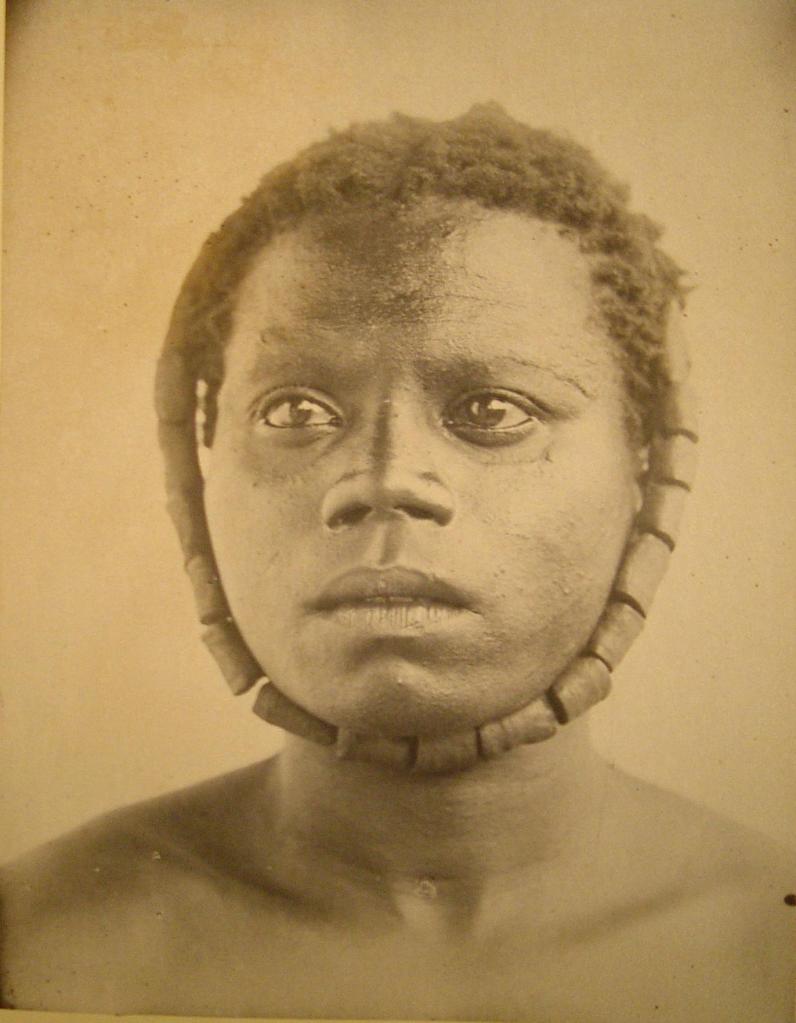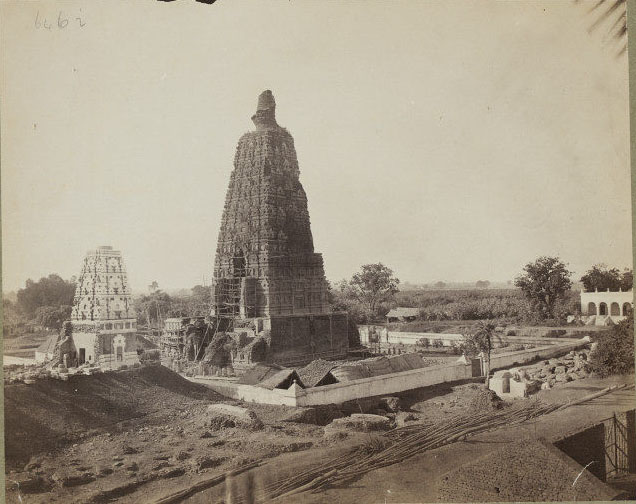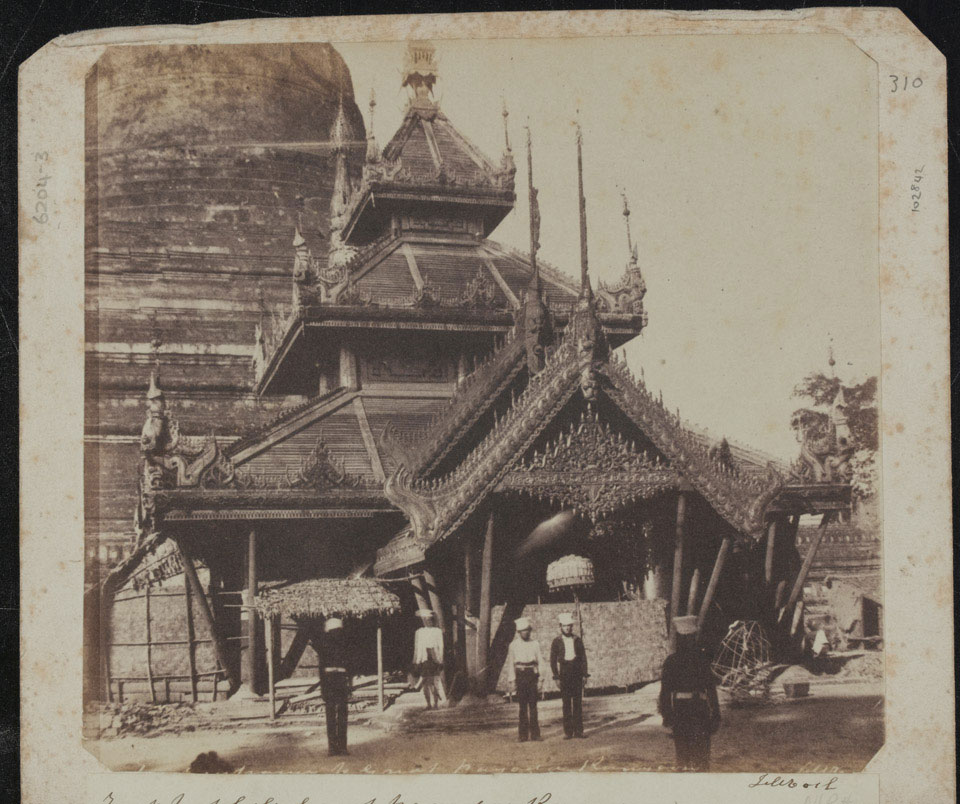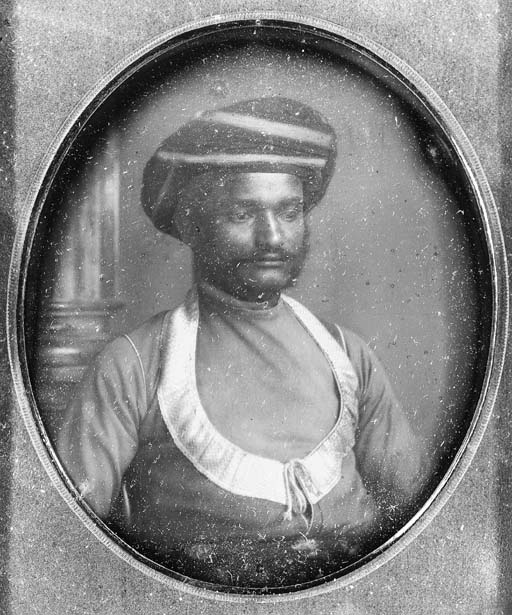Maurice Vidal Portman (1860 – 1935), an officer in the Royal Indian Marine, self-fashioning anthropologist, historian and a photographer was an Assistant Commissioner and officer in charge of the Andamanese between 1879 and 1900. The British Museum commissioned Maurice Vidal Portman to scientifically document and photograph the disappearing races in the Bay of Bengal. He carried out this ambitious plan but could not complete photographing the Andamanese aboriginals.
The Andamanese are the indigenous tribes of Negrito hunters and gatherers of the Andaman Islands. In 1908, the term “Andamanese” referred to thirteen distinct tribal groups, each distinguished by a different dialect and geographical location. Until the late 18th century, the Andamanese culture, language, and genetics were preserved from outside influences by the remoteness of the islands and their fierce reaction to visitors, which included killing any shipwrecked foreigners.
Maurice Vidal Portman, with his magnetism, charm, and sympathy, made aborigines to believe him and then enslaved them. In his obituary, he was designated as “Father’ of Andaman Islanders”.

Portman took several thousand photographs of the Andamanese, their cultural life, at work: manufacturing weapons, tools, and rope, shooting arrows, and their “natural” habitat, during 1890 and 1895. In the same period that Portman took these pictures, he conducted a parallel project of ethnography, measuring at least 200 men and women. Using calipers and grids, he recorded various indexes and measurements as well as other physical characteristics of tribes. Alongside these observations, he documented the social, political, and psychological qualities of the Andamanese.
Maurice Vidal Portman made 5 copies from each negative of which two copies were sent to British Museum and three copies to British Government of India.
He produced 15 volumes of photographic albums in total, these are as follows
- Volumes 1 and 2 Typical heads of the Andamanese.
- Volume 3, Heads of the Andamanese, full face and profile.
- Volume 4, Adze and bow-making.
- Volumes 5 and 6, Bow and arrow-making.
- Volume 7, Rope-making and hut-building.
- Volume 8, Eating and drinking, packing and carrying bundles, utensils, etc., attitudes, torch-making, greeting, etc.
- Volume 9, Painting, tattooing, counting.
- Volume 10, Measurements and medical details of 50 males of the South Andman group of tribes.
- Volume 11, Measurements and medical details of 50 females of the South Andaman group of tribes.
- Volume 12, Full length, full face, and profile views of male Andamanese.
- Volume 13, Full length, full faces, and profile views of female Andamanese.
- Volumes 14 and 15, the measurements and medical details of 50 males and 50 females of the North Andaman group of tribes.
Portman trained and appointed dozens of Andamanese as his assistants who posed for the photographs, carried his equipment, assisted in taking the image, and worked in his spacious and elaborately equipped darkroom. The pictures are of high quality in the aesthetical and in the technical sense.
Portman used Edward’s Isochromatic plates (orange-sensitive silver bromide gelatine plates) with varying sizes like 15″x12″, 8 1/2″x6 1/2″ and 5″x4”.
All of the early processes were principally sensitive to the blue/violet end of the spectrum. In contrast, the human eye is most sensitive to yellow/green light. As a result, different colour rendering was produced in a photograph; blue objects appeared much lighter and yellow objects much darker.
To extend the sensitivity of Collodion plates to the green colours of the spectrum, Hermann Wilhelm Vogel, a German photochemist in1873 treated them with red dyes. The plates were exposed in the camera with a yellow filter over the lens to hold back the blue wavelengths. Although still not sensitive to orange and red, these plates produce a negative with a more normal range of tones. These plates, also called Isochromatic, were sensitive into the green, and in part yellow, spectrum range. The term Isochromatic from the creeks words Isos, meaning equal and chroma, meaning colour, was eventually replaced with orthochromatic.
The use of the eosins (Eosin is a fluorescent red dye resulting from the action of bromine on fluorescein) in the development process was patented in England by Tailfer and Clayton of Paris in 1883. B. J. Edwards and Co secured the sole licence under this patent for Great Britain and the colonies and the only makers of Isochromatic plates in Great Britain.
Portman used Edward’s Isochromatic plates, which are specially imported from Great Britain for his major photographic documentation project of the ethnography and culture of the Andaman Islands.
Reference
themagazineantiques.com
https://www.encyclopedia.com/humanities/encyclopedias-almanacs-transcripts-and-maps/andamanese
http://www.earlyphotography.co.uk/site/gloss11.html
http://www.luminous-lint.com/
https://www.britishmuseum.org/
The Focal Encyclopedia of Photography, edited by Michael R. Peres
Photography: Its History, Processes, Apparatus, and Materials: Comprising, By Alfred Brothers
Savage bodies, civilized pleasures: . V. Portman and the Andamanese, SATADRU SEN, Queens College, City University of New York













